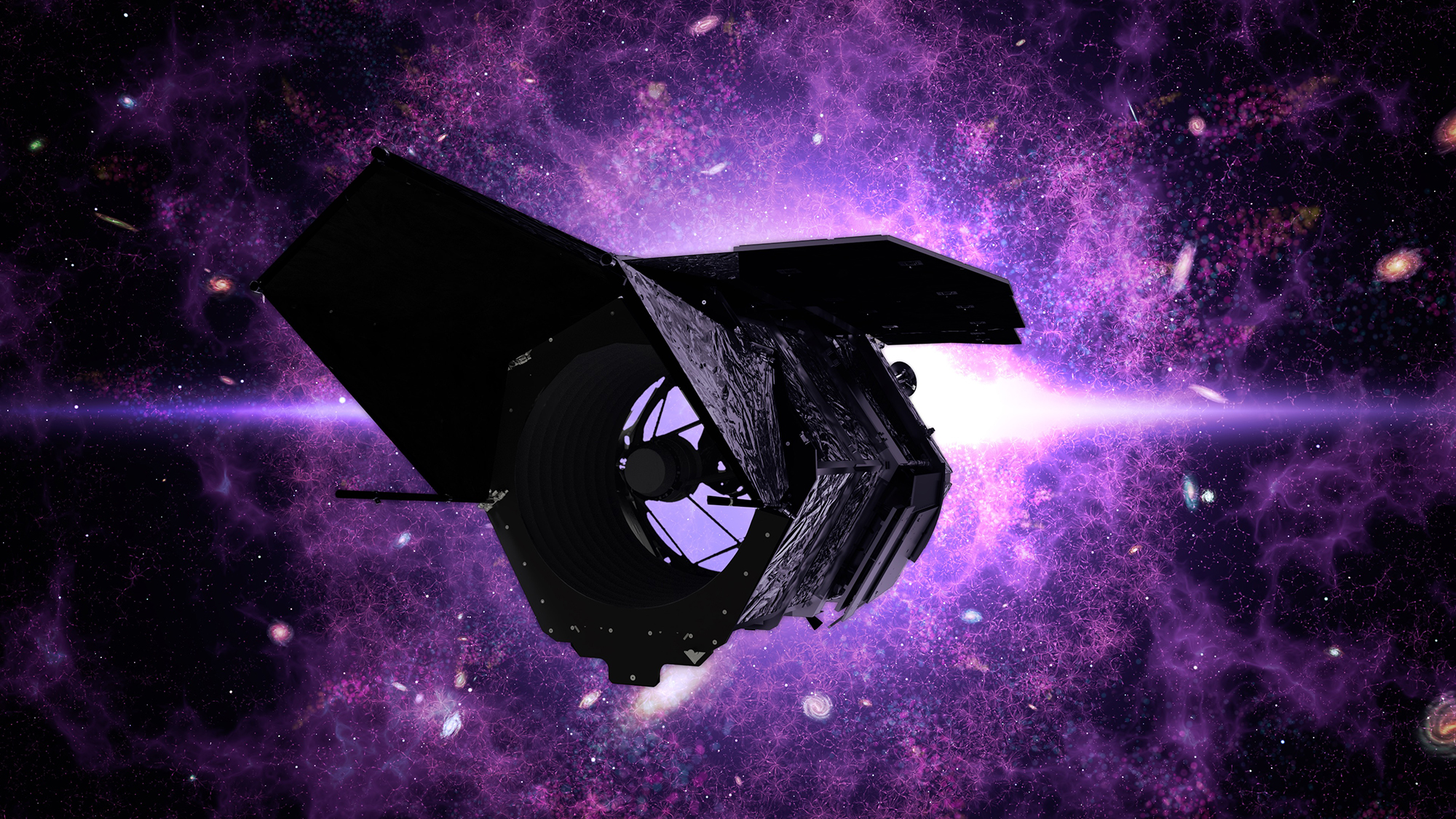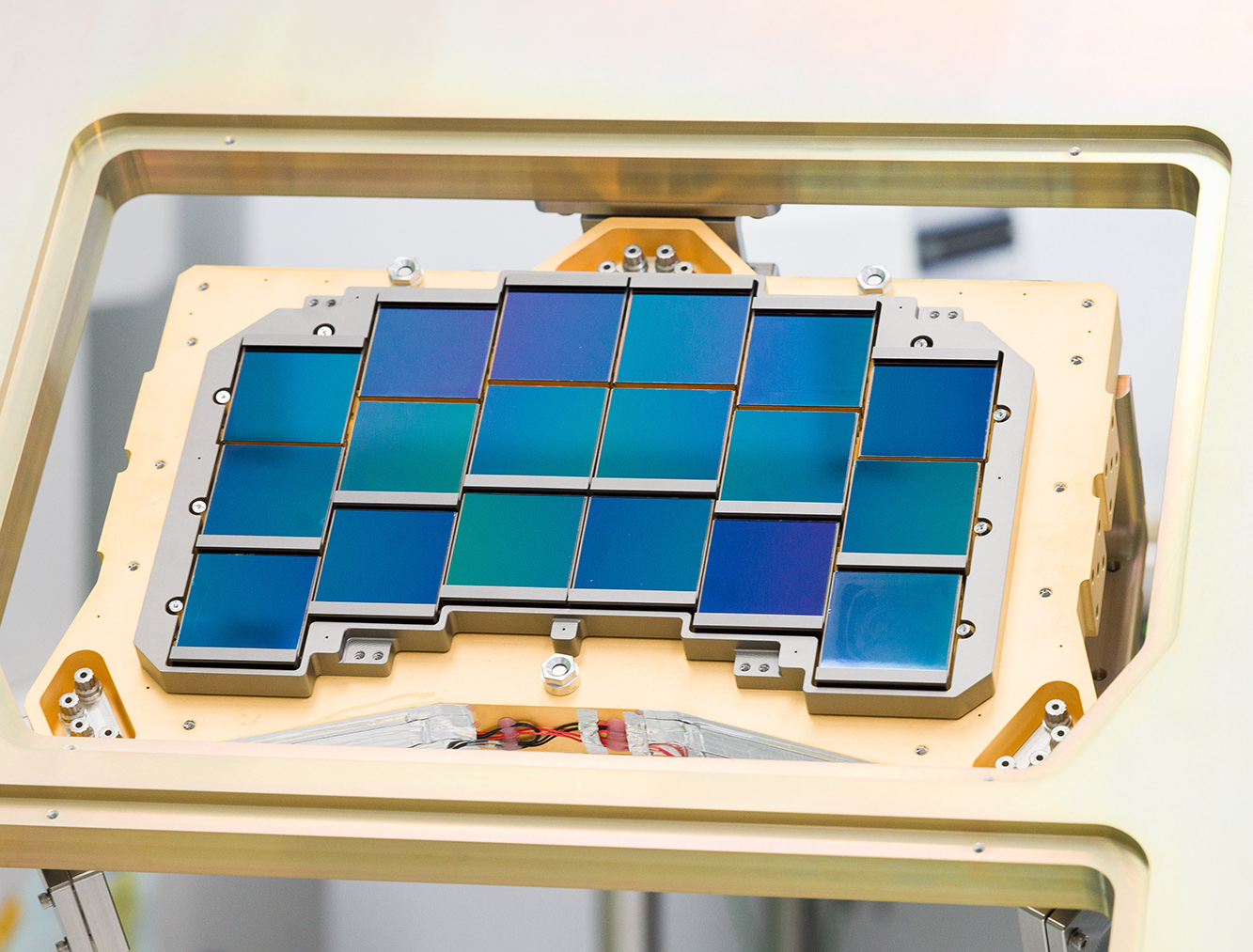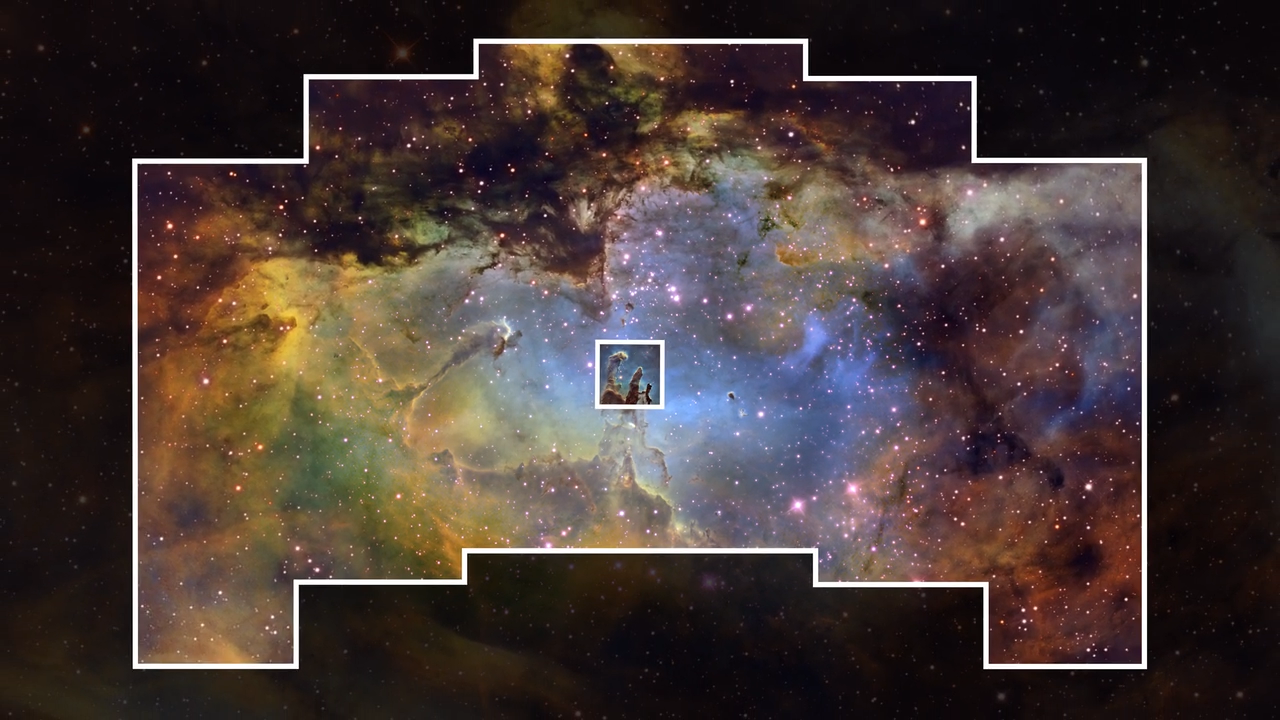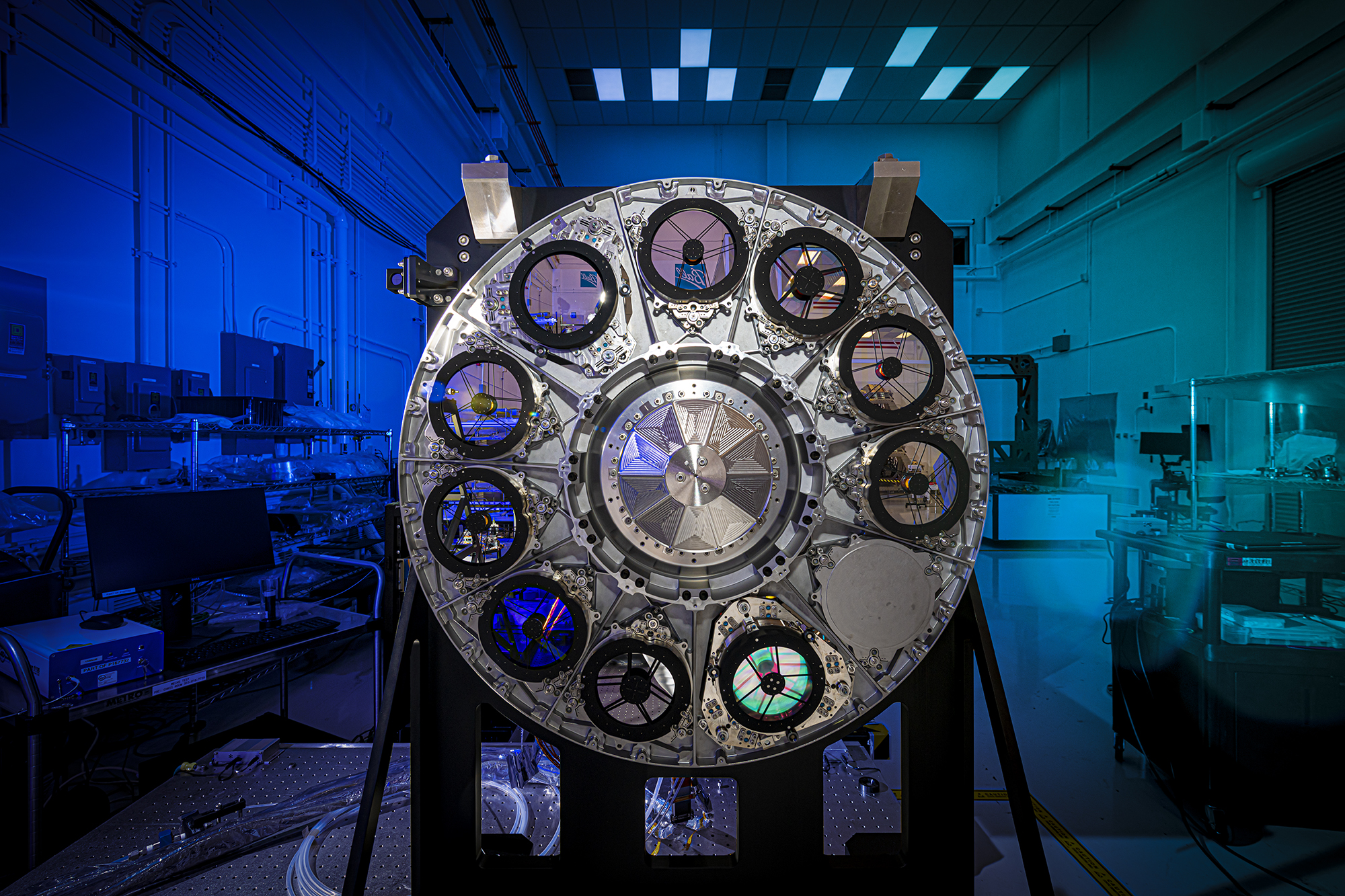
NASA is gearing up for the highly anticipated May 2027 launch of the Nancy Grace Roman Space Telescope, and the astronomy and cosmology community is already buzzing with excitement. Dubbed “Hubble’s wide-eyed cousin,” this cutting-edge telescope promises to revolutionize our understanding of exoplanets and the universe beyond.
“This Hubble-grade telescope will have a field of view that’s 100 times greater than Hubble’s infrared instrument,” says Bhuvnesh Jain, a professor in the Department of Physics and Astronomy in the School of Arts & Sciences. “This means Roman will be able to capture much larger swaths of the sky in far less time.”
Jain and Physics and Astronomy colleagues Mike Jarvis, Masao Sako, and Robyn Sanderson, are among those eagerly awaiting Roman’s journey to the cosmos. They are all members of Center for Particle Cosmology at Penn and part of a select global team that is building the analysis software to extract scientific findings from Roman’s images. The Penn group is the largest university led-team in the project, and has been awarded over $4 million to build a team of up to a dozen students and postdoctoral fellows. The researchers will take on three key investigations: analyze billions of galaxy images to map dark matter to the earliest cosmic times, study the time variability of faraway light, and probe the faintest neighbors of the Milky Way.
From surveillance to survey
The process started in 2011, Jain says, when the National Reconnaissance Office (NRO), the agency that builds surveillance equipment for the CIA, NSA, and other government agencies, reached out to NASA. “They called saying they had a couple of spy satellites sitting in a warehouse in upstate New York,” says Jain. “They weren’t using them, and they figured NASA might like them because they had some state-of-the-art instruments that could be co-opted to look in a different direction: out to space.”
NASA was interested in this offer, says Jarvis, and almost immediately sent over a few astronomers to inspect the satellites. “When they got to this warehouse, they were like kids in a candy store,” he says. “Because the telescopes’ capabilities far exceeded what we have come to expect on the bare bones budgets for science—and the fact that the NRO had two of these Hubble-grade telescopes that had never left the ground and that they were willing to give away just added to the absurdity. Nonetheless, we’re happy that this got the ball rolling for Roman.”
The researchers explain that although the NRO was ready to gift the satellites to the NASA astronomers, a case still needed to be made about how they could be used and how NASA would be able to afford the modifications required to get them fitted with interstellar observational tools and out to orbit. “It turned out, we couldn’t use a lot of the instruments seeing as they were intended for covert affairs,” Jain explains.
Jain and Jarvis note that the timing of the Roman telescope project coincided with the highly anticipated launch of the James Webb Space Telescope (JWST), which presented a set of challenges for the Roman team: As a flagship NASA mission with immense scientific and public interest, JWST attracted a significant portion of NASA’s attention and resources. Instead, the researchers highlighted Roman’s complementary scientific goals and the cost-effectiveness of repurposing existing high-quality hardware.
Alongside colleagues from Caltech and Duke, Jain suited up and undertook trips to Washington D.C. to secure support for the project, demonstrating the value and potential of repurposing the spy telescope for cosmological research. “At the end of the day, we were able to help NASA raise north of $1 billion, which set it on the path to launch,” says Jain.
First things ‘WFIRST’
Sanderson notes how Roman was initially named the Wide-Field Infrared Survey Telescope (WFIRST), and adds that this was a tongue-in-cheek allusion to one of its science goals. “That name dates back to the 2010 decadal survey in the field—there were competing proposals for a mission that wanted to look at exoplanets, and then another mission that wanted to look at cosmology.”
Sanderson says during that survey, NASA realized that they could do some of both with the same telescope. “But there was a big debate about whether to do that in that community. And in cosmology, one of the things that Roman is now going to try to understand better is the way in which the expansion rate of the universe is accelerating due to dark energy. And that’s parameterized with this thing that people call W for shorthand. So, when they unified the missions, they wanted to indicate that one of them was a main priority.”
Sanderson explains that WFIRST was renamed to Nancy Grace Roman Space Telescope in 2020 in honor of the NASA astronomer. “She was the first chief astronomer at NASA, and she played a major role in securing funding for Hubble from Congress, so in the community she’s known as ‘mother of the Hubble Space Telescope.’”
The observations
Sako’s work for the Roman project will primarily involve observing Type Ia supernovae and will focus on using these stellar explosions as cosmological tools to understand the nature of dark energy, which is the mysterious force discovered in 1998 that makes up about 70 percent of the universe. He explains that Type Ia supernovae are particularly useful for this purpose because they can be used as “standard candles,” meaning that by understanding the intrinsic brightness of these supernovae, astronomers can accurately determine their distances from Earth.
“In addition to supernova observations, Roman will conduct extensive galaxy surveys,” Sako says. “These surveys can provide rich context for supernova studies, allowing us to correlate supernova properties with their host galaxies’ characteristics, offering insights into supernova progenitors and their environments.”
He also notes that Roman will provide deep and wide-field imaging capabilities, allowing researchers to observe a large number of Type Ia supernovae over larger swaths of the sky. This is crucial for identifying and studying these supernovae across a wide range of redshifts, which is when the light from an object in space, such as a star, galaxy, or supernova, shifts towards longer, redder wavelengths as it travels towards the observer. This shift can be seen in the spectrum of the object, where spectral lines, specific wavelengths of light that are absorbed or emitted by elements, are displaced toward the red part of the spectrum.
Jain and Jarvis’s team will work in gravitational lensing, using the pixel level data to learn about dark matter and dark energy and the early universe. “Gravitational lensing is a phenomenon predicted by Einstein’s General Theory of Relativity, where the gravity of a massive object, like a cluster of galaxies, bends and magnifies the light coming from distant objects behind it,” explains Jain, who leads the cosmology effort for Roman along with Penn alum Tim Eifler, now faculty at the University of Arizona. He notes that new AI techniques will be key in extracting information from the data.
“This effect can be used to map the distribution of dark matter and study the properties of dark energy, as it affects the structure and evolution of the universe,” Jarvis adds. “Roman’s wide-field imaging capabilities will allow for detailed observations of gravitational lensing effects and over large areas of the sky.”
Sanderson’s involvement in the Roman project is linked to her fascination with dark matter and its impact on the formation of galaxies. By using Roman to track stellar motions within the Milky Way, she seeks to shed light on the galaxy’s expansive structure.
“We refer to this is as “galactic archaeology,” Sanderson says. “It’s a field where researchers piece together the cosmic puzzle of the universe’s origins by examining ancient stars.”
Sanderson’s approach will leverage Roman’s advanced capabilities for both weak lensing and the observation of dim stars, which are vital for dissecting the complexities of galactic structures and dynamics. Additionally, she will work on finding new ways to tap into Roman’s features for other scientific observations. “We have five years of funding to study how you would do a Roman-type survey, to simulate it, and figure out how to get the most information for the same number of observations.”
Next steps
In reflecting on the success of space missions, Jain is also excited about the European Space Agency’s Euclid space telescope, whose launch he witnessed last summer. Jain notes the Penn astronomy group “plays a significant role in both these major telescope projects, a rarity among university groups.”
“Specifically, in the Roman project, we are probably the largest university group in the nation. These projects are led by NASA labs, JPL [Jet Propulsion Laboratory] in our case, who bring hardware and software specialists. Our four senior researchers and the students and postdocs we will hire, coupled with substantial funding, puts us in a great position to do some exciting work. We will tackle the big cosmic questions and create some awe-inspiring images in the process.”
Bhuvnesh Jain is the Walter H. and Leonore C. Annenberg Professor in the Natural Sciences and co-director of the Center for Particle Cosmology in the Department of Physics and Astronomy in the School of Arts & Sciences.
Mike Jarvis is a research scientist at the Center for Particle Cosmology in the School of Arts & Sciences.
Masao Sako is the Arifa Hasan Ahmad and Nada Al Shoaibi Presidential Professor of Physics and Astronomy in the Department of Physics and Astronomy in the School of Arts & Sciences.
Robyn Sanderson is an assistant professor in the Department of Physics and Astronomy in the School of Arts & Sciences.














